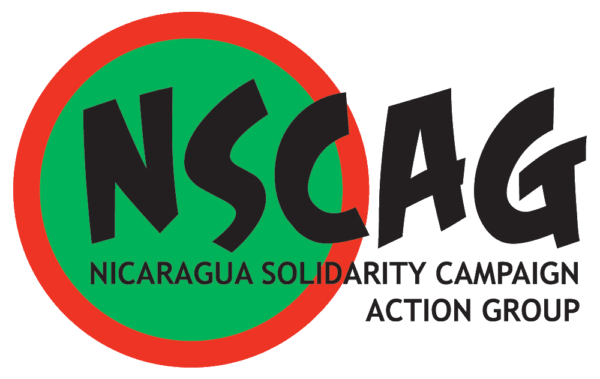Nicaragua Solidarity Campaign Action Group
14 December 2020
Climate extremes, what difference can agroecology make for food sovereignty?

One of the worst ever Atlantic hurricanes struck Central America in October 1998 causing over 11,000 fatalities, 3,800 of them in Nicaragua. In addition there was destruction on an immense scale of homes, livelihoods and infrastructure.
In the wake of the hurricane, agroecologist and economist Eric Holt-Gimenez, wrote his doctoral dissertation about farming practices in Nicaragua; in his research, he found that farms using agroecological practices had substantially higher recovery rates and therefore played a key role in guaranteeing food to families and communities following the disaster.
In November, 2020 the region was struck by not only one but two category 4 hurricanes within two weeks. Yet another example of the impact of the climate crisis in countries that bear little or no responsibility for the scale of the problem. However, yet again small scale farmers are providing evidence of the importance of agroecological farming practices both in mitigating climate extremes and in the recovery process.
Twenty – three people tragically lost their lives, a figure that would have been much higher had it not been for Nicaragua’s well organised and integrated system for the prevention, mitigation and attention to disasters.

However, according to government estimates, the hurricanes caused US$750m worth of damage and destruction to homes, livelihoods, schools, health facilities, and infrastructure.
For many farmers this came at the worst possible time when staple crops such as beans and maize were due to be harvested. Crop losses vary from region to region. For example, some places lost their entire bean crop but more typically losses were 75-90%. This has very serious ramifications for the food security of small scale farmers and their communities in the coming months.

Small scale farmers grow high grade coffee under the canopy of trees and banana and plantain palms. High winds and torrential rain damaged ripening coffee and falling trees destroyed bushes. Credit: CECOCAFEN
What difference does agroecology make?
In early December, Friends of the ATC representative in Nicaragua, Erika Takeo, visited the community of La Montañita in Esteli to witness the extent of crop damage, to find out what difference agroecological farming practices have made, and to discuss the community’s recovery plans.
Most of the 50 families in the community are small scale farmers who grow maize and beans for their own consumption and to sell locally. They also keep cows, pigs and hens and grow coffee, citrus fruit, papaya and passion fruit. The community uses agroecological farming methods with the support of the ATC and government institutions.
Members of the community confirmed crop losses of 80-90% of beans and 50% of the maize, reflecting the damage suffered by farmers across northern Nicaragua. High winds and prolonged heavy rain knocked over the plants and left the grains saturated. This has made it impossible to store the crops in sacks or silos to use for food in the coming months or to save the grains for seed. This represents not just loss of food but also of the income the farmers would normally have earned from selling the surplus crops.
Farmers show crop damage caused by the two hurricanes
This is an example of farmers in one area but illustrates the wider threat to Nicaragua’s food security and sovereignty.
However, reflecting the findings of Eric Holt- Ramirez study in 1999, the farmers explained to Erika how agroecological farming methods had prevented even worse damage.
Using native seeds
The farmers of La Montañita have been working together with the Nicaraguan Institute of Agricultural Technology (INTA) on rescuing native seeds and organising community seed banks. This means that the seeds they have been using are much better adapted to the local environment and more resilient to climate extremes. Community representative Jose Antonio estimated that had they been using conventional seeds supplied by transnational corporations they would have lost 100% of their crops.
Creating biodiversity
The community in La Montañita is developing a 3.5 acre demonstration farm. The whole area became a lagoon during the hurricanes. However, shallow, grass lined channels helped to absorb at least some of the rain, preventing the topsoil from being washed away down the mountainside.
Cover cropping and the integration of perennials and trees into the landscape also played an important role in capturing water, preventing soil erosion, as well as acting as windbreaks.
Diversification of crops
A diversity of crops is not only important in encouraging biodiversity but also means that even if one or two are destroyed or damaged there are still dozens of others that provide food and income for the family in the months to come.

Credit: Friends of the ATC
This was well illustrated in La Montañita by the fact that a few days after the rains had passed, young lemon, orange and avocado trees sprouted new growth. The dragon fruit support posts, and a fuschia called elequeme, suffered some minor damage but can be fixed and the planting of dragon fruit can now begin.
Agroecology, food sovereignty and climate justice
The ATC is a member organisation of the global movement of peasants and indigenous peoples La Via Campesina (LVC) that promotes agroecology, food sovereignty and climate justice.
LVC has highlighted the fact that the climate crisis and Covid-19 have exposed the profound dangers of unsustainable capitalism.
The farming methods and way of life of the campesinxs of La Montanita is an example of the importance of building a diverse, resilient, local food system that respects life in all its forms.
—————————————
What you can do
Please donate to the NSC’s hurricane appeal to support small scale farmers from the ATC and the Co-operative Union CECOCAFEN to recover crops, food supplies and livelihoods over the coming year. http://localhost/nicaragua/donate/

